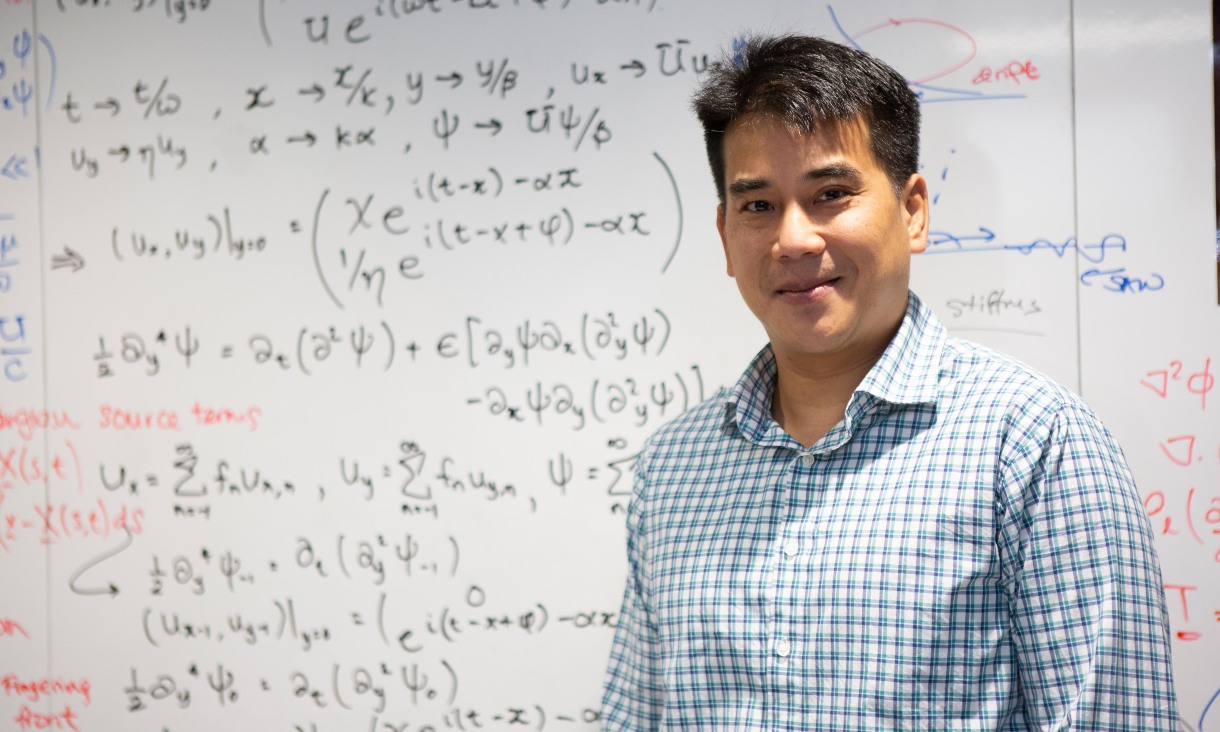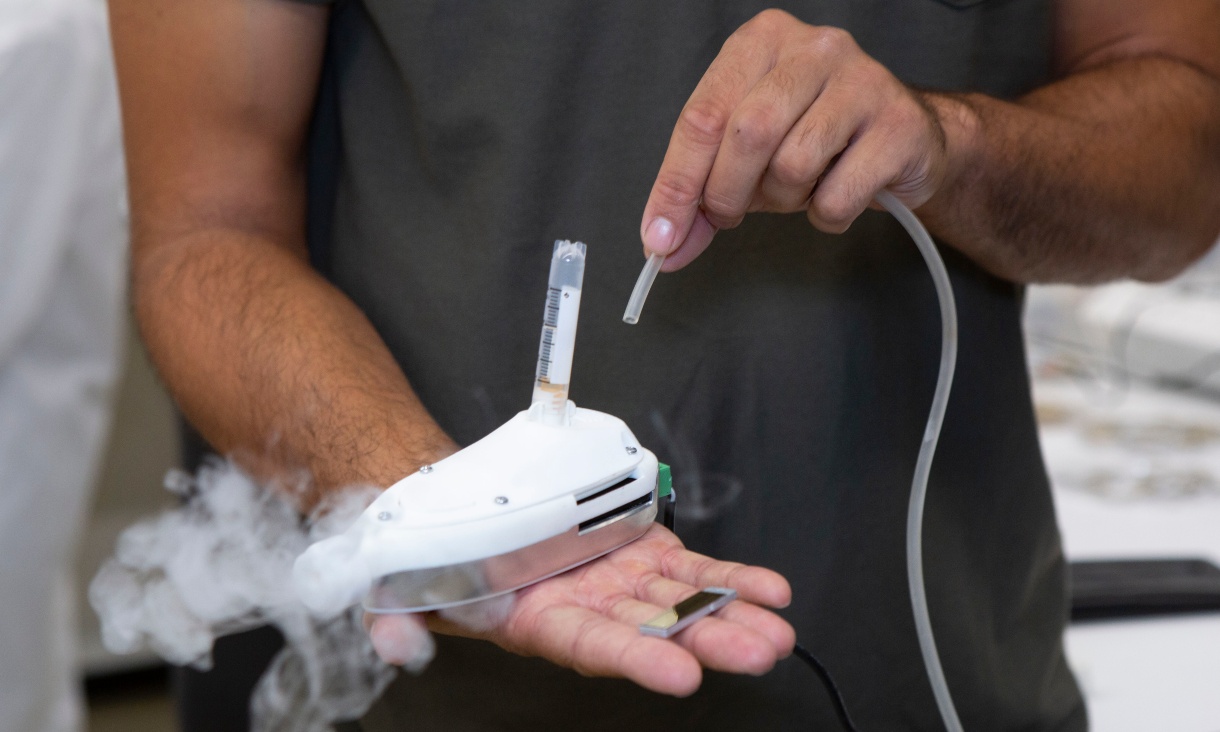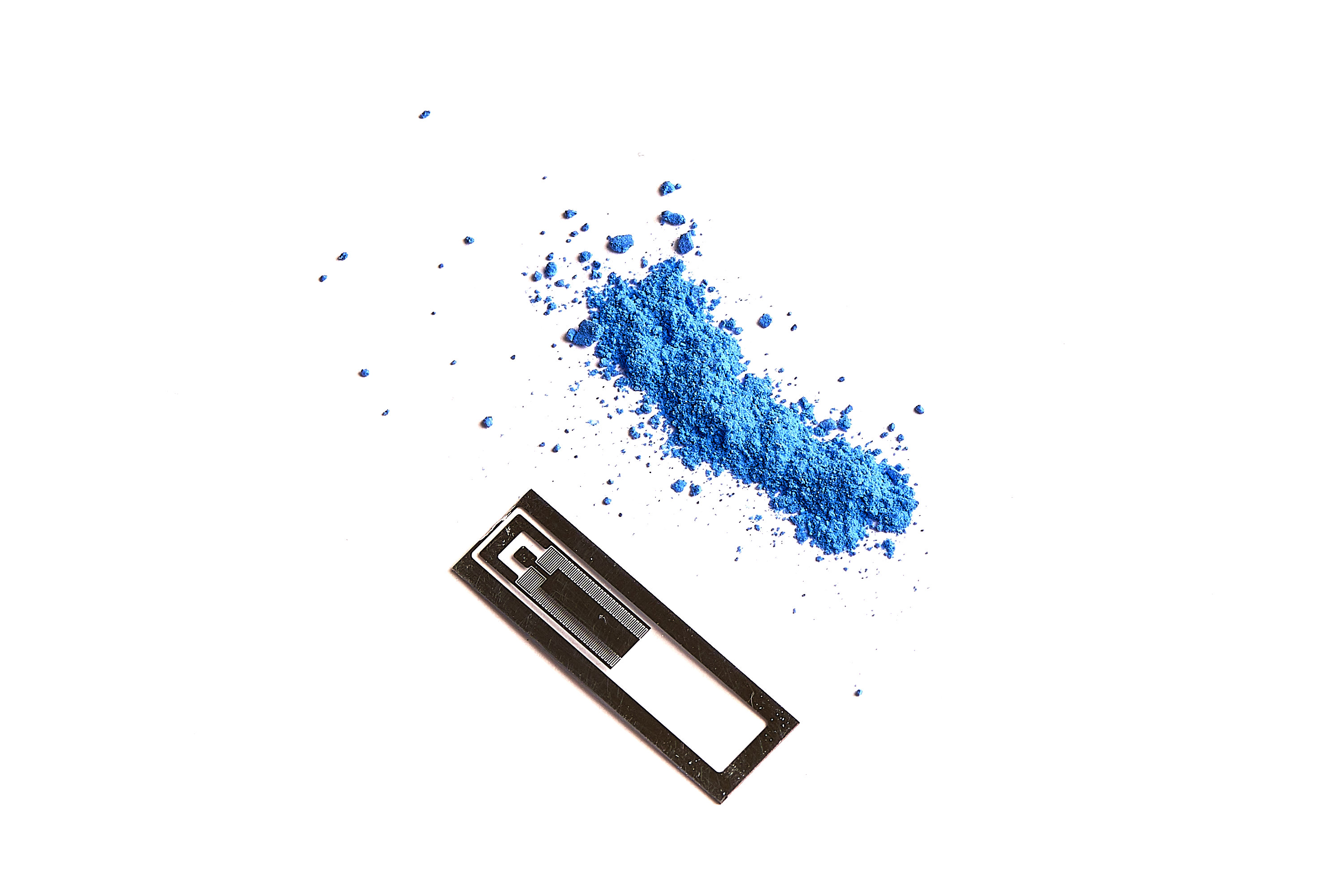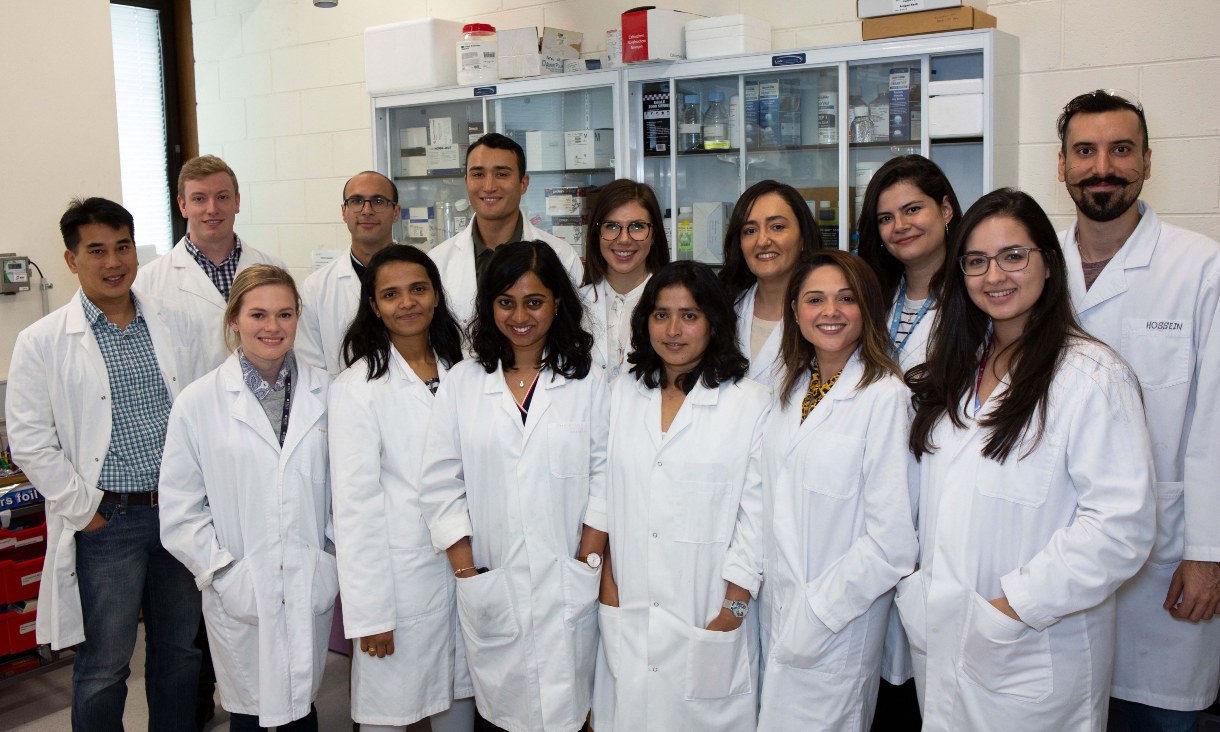 Distinguished Professor Leslie Yeo.
Distinguished Professor Leslie Yeo.
Researchers have revealed how high-frequency sound waves can be used to build new materials, make smart nanoparticles and even deliver drugs to the lungs for painless, needle-free vaccinations.
While sound waves have been part of science and medicine for decades – ultrasound was first used for clinical imaging in 1942 and for driving chemical reactions in the 1980s – the technologies have always relied on low frequencies.
Now researchers at RMIT University have shown how high frequency sound waves could revolutionise the field of ultrasound-driven chemistry.
A new review published in Advanced Science reveals the bizarre effects of these sound waves on materials and cells, such as molecules that seem to spontaneously order themselves after being hit with the sonic equivalent of a semi-trailer.
The researchers also detail various exciting applications of their pioneering work, including:
- Drug delivery to the lungs – patented nebulisation technology that could deliver life-saving drugs and vaccines by inhalation, rather than through injections
- Drug-protecting nanoparticles – encapsulating drugs in special nano-coatings to protect them from deterioration, control their release over time and ensure they precisely target the right places in the body like tumours or infections
- Breakthrough smart materials – sustainable production of super-porous nanomaterials that can be used to store, separate, release, protect almost anything
- Nano-manufacturing 2D materials – precise, cost-effective and fast exfoliation of atomically-thin quantum dots and nanosheets
Lead researcher Distinguished Professor Leslie Yeo and his team have spent over a decade researching the interaction of sound waves at frequencies above 10 MHz with different materials.
But Yeo says they are only now starting to understand the range of strange phenomena they often observe in the lab.
“When we couple high-frequency sound waves into fluids, materials and cells, the effects are extraordinary,” he says.
“We’ve harnessed the power of these sound waves to develop innovative biomedical technologies and to synthesise advanced materials.
“But our discoveries have also changed our fundamental understanding of ultrasound-driven chemistry – and revealed how little we really know.
“Trying to explain the science of what we see and then applying that to solve practical problems is a big and exciting challenge.”
 Distinguished Professor Leslie Yeo.
Distinguished Professor Leslie Yeo.
Sonic waves: how to power chemistry with sound
The RMIT research team, which includes Dr Amgad Rezk, Dr Heba Ahmed and Dr Shwathy Ramesan, generates high-frequency sound waves on a microchip to precisely manipulate fluids or materials.
Ultrasound has long been used at low frequencies – around 10 kHz to 3 MHz – to drive chemical reactions, a field known as “sonochemistry”.
At these low frequencies, sonochemical reactions are driven by the violent implosion of air bubbles.
This process, known as cavitation, results in huge pressures and ultra-high temperatures – like a tiny and extremely localised pressure cooker.
But it turns out that if you up the frequency, these reactions change completely.
When high frequency sound waves were transmitted into various materials and cells, the researchers saw behaviour that had never been observed with low-frequency ultrasound.
“We’ve seen self-ordering molecules that seem to orient themselves in the crystal along the direction of the sound waves,” Yeo says.
“The sound wavelengths involved can be over 100,000 times larger than an individual molecule, so it’s incredibly puzzling how something so tiny can be precisely manipulated with something so big.
“It’s like driving a truck through a random scattering of Lego bricks, then finding those pieces stack nicely on top of each other – it shouldn’t happen!”
 The patented ‘Respite’ nebuliser uses high-frequency sound waves to precisely deliver drugs to the lungs.
The patented ‘Respite’ nebuliser uses high-frequency sound waves to precisely deliver drugs to the lungs.
Biomedical advances
While low-frequency cavitation can often destroy molecules and cells, they remain mostly intact under the high-frequency sound waves.
This makes them gentle enough to use in biomedical devices to manipulate biomolecules and cells without affecting their integrity – the basis for the various drug delivery technologies patented by the RMIT research team.
One of these patented devices is a cheap, lightweight and portable advanced nebuliser that can precisely deliver large molecules such as DNA and antibodies, unlike existing nebulisers.
This opens the potential for painless, needle-free vaccinations and treatments.
The nebuliser uses high-frequency sound waves to excite the surface of the fluid or drug, generating a fine mist that can deliver larger biological molecules directly to the lungs.
The nebuliser technology can also be used to encapsulate a drug in protective polymer nanoparticles, in a one-step process bringing together nano-manufacturing and drug delivery.
In addition, the researchers have shown irradiating cells with the high-frequency sound waves allows therapeutic molecules to be inserted into the cells without damage, a technique that can be used in emerging cell-based therapies.
 An acoustically-created MOF, with the microchip that produced the high-frequency sound waves used in the process.
An acoustically-created MOF, with the microchip that produced the high-frequency sound waves used in the process.
Smart materials
The team has used the sound waves to drive crystallisation for the sustainable production of metal-organic frameworks, or MOFs.
Predicted to be the defining material of the 21st century, MOFs are ideal for sensing and trapping substances at minute concentrations, to purify water or air, and can also hold large amounts of energy, for making better batteries and energy storage devices.
While the conventional process for making a MOF can take hours or days and requires the use of harsh solvents or intensive energy processes, the RMIT team has developed a clean, sound wave-driven technique that can produce a customised MOF in minutes and can be easily scaled up for efficient mass production.
Sound waves can also be used for nano-manufacturing 2D materials, which are used in myriad applications from flexible electric circuits to solar cells.
 The pioneering Micro/Nanophysics Research Laboratory team.
The pioneering Micro/Nanophysics Research Laboratory team.
Scaling up and pushing boundaries
The next steps for the RMIT team are focused on scaling up the technology.
At a low cost of just $US0.70 per device, the sound wave-generating microchips can be produced using the standard processes for mass fabrication of silicon chips for computers.
“This opens the possibility of producing industrial quantities of materials with these sound waves through massive parallelisation – using thousands of our chips simultaneously,” Yeo said.
The team at the Micro/Nanophysics Research Laboratory, in RMIT’s , is one of just a few research groups in the world bringing together high-frequency sound waves, microfluidics and materials.
Yeo says the research challenges long-held physics theories, opening up a new field of “high frequency excitation” in parallel to sonochemistry.
“The classical theories established since the mid-1800s don’t always explain the strange and sometimes contradictory behaviour we see – we’re pushing the boundaries of our understanding.”
The research is supported through Australian Research Council (ARC) Discovery Project grants.
‘‘, with co-authors Dr Ahmed Rezk, Dr Heba Ahmed and Shwathy Ramesan, is published in Advanced Science (DOI: 10.1002/advs.202001983).





